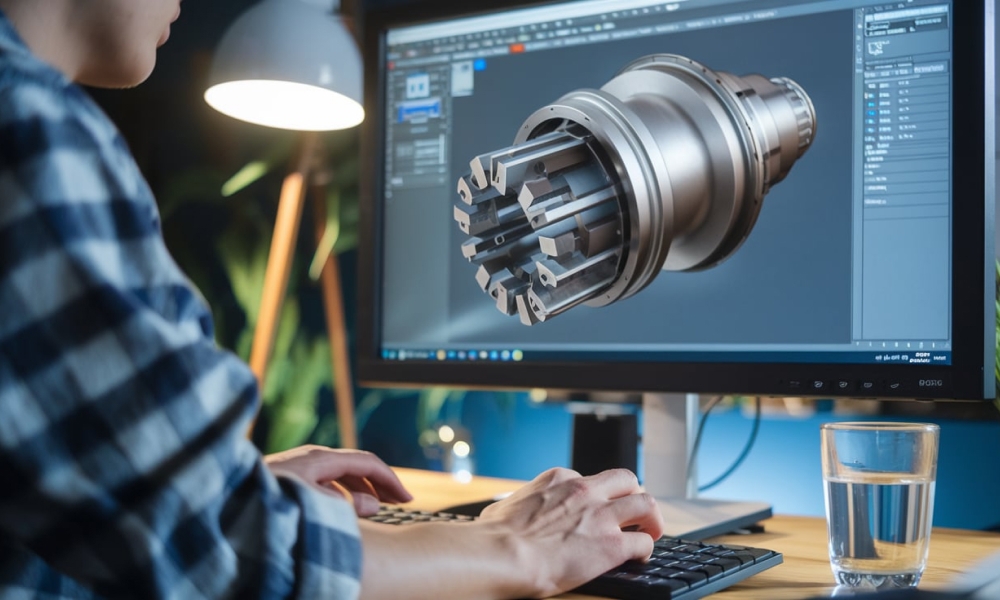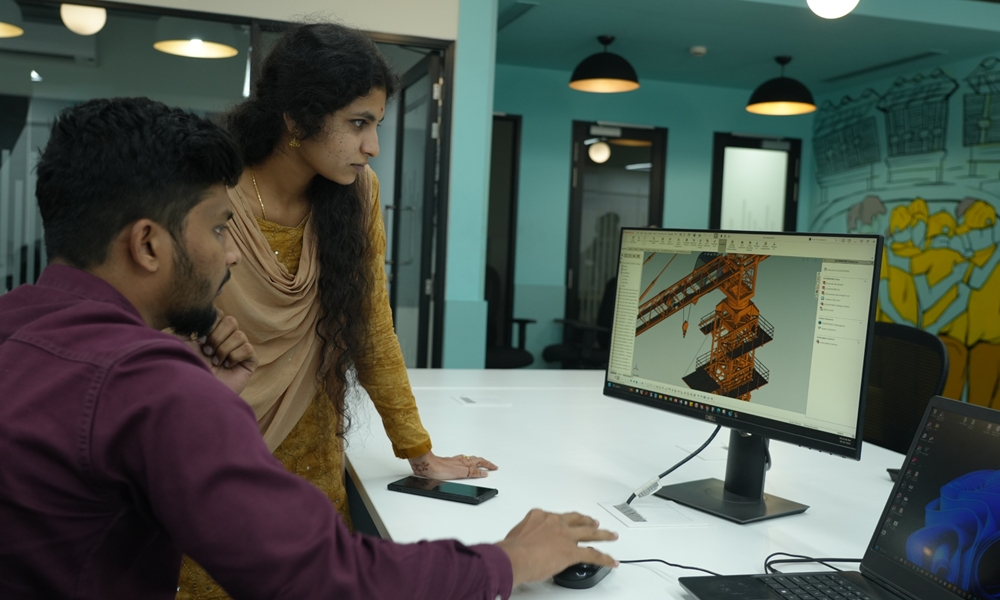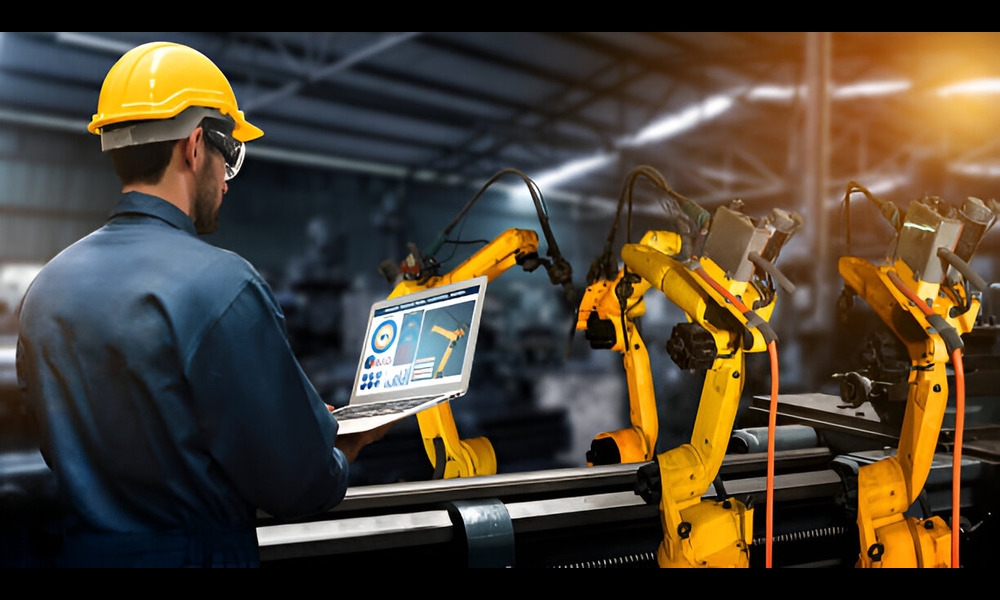CAD modeling is a game-changer for manufacturers looking to stay ahead in today’s competitive market. Whether you're designing a new product, optimizing a system design, or improving existing operations, CAD can make a big impact. In this blog, you’ll discover what CAD modeling is, how it benefits manufacturers, and why it’s essential for improving design precision, cutting costs, and speeding up production cycles.
At Sedin Engineering, we specialize in 3D CAD modeling for manufacturers across different industries, providing expert engineering design services that help businesses innovate and excel.
What is CAD Modeling?
CAD or Computer-Aided Design is the process of using software to create detailed 2D or 3D models of physical objects or systems (electrical, mechanical or industrial).
Think of CAD models as digital blueprints for things that need to be made. In manufacturing, you can create 2D or 3D models for everything from simple parts to complex assemblies. This helps designers, engineers, and manufacturers visualize and test products before building them.
In simple words, CAD models help ensure designs are accurate and functional, reducing costly mistakes, minimizing waste, and improving efficiency.

Types of CAD Modeling
Depending on the stage of design and manufacturing process, there are different types of CAD modeling, including:
1. 2D CAD Modeling: The Blueprint Stage
Before a product comes to life, it starts as a two-dimensional computer-aided design or simply 2D drawing. Think of it as the “blueprint” phase where everything is laid out flat. 2D CAD modeling is used for basic drawings like floor plans, mechanical sketches, structure details or even electrical diagrams. It’s perfect for when you need to map out something simple or when you need detailed technical documentation.
2. 3D CAD Modeling: Bringing It to Life
Once you’ve got your 2D plans, the next step is three-dimensional computer-aided design or 3D CAD modeling. This is where things get interesting because it’s not just about looking at a flat drawing – it’s about creating a digital version of the actual product and visualizing how it would look in the real world. 3D modeling allows you to see the object from all angles, ensuring everything fits and functions as it should.
Parametric Modeling: Flexibility and Efficiency
Parametric modeling is like setting up a system of rules for your design. Instead of starting from scratch each time, you build models based on key parameters like length, width, height, angles or other features. When you change one of these parameters, the 3D model updates automatically. This saves a lot of time, especially when you need to make frequent changes or work with multiple similar parts.
Solid Modeling: Getting Detailed
Solid modeling is a more advanced form of 3D modeling, where we go beyond just visual representation and define the volume and material properties of the object. It’s like creating a “real” version of the product that includes everything – from shape to weight to the forces it can withstand. Solid models are perfect for when you need to test the structural integrity or simulate physical behavior, like stress or thermal analysis.
Surface Modeling: Shaping Complex Surfaces
Surface modeling is all about smooth, complex curves. It’s perfect for designs that need an organic, sculptural look – like car bodies, airplane wings, or any product where aerodynamics or aesthetics is key. It’s a little less about the inside of the object and more about creating the outer skin that defines its appearance.
Freeform Modeling: Unlocking Creativity
When you need to create unique, complex shapes that don’t fit into standard boxes or cylinders, you turn to freeform modeling. This technique focuses on designing products that need to stand out or require an artistic touch. It prioritizes creativity over rigid geometry.
Sheet Metal Modeling: The Perfect Fit for Manufacturing
When designing products that will be made from sheet metal (like enclosures, panels, or chassis), sheet metal modeling is the way to go. It takes into account the bending, folding, and cutting of metal, which is crucial for manufacturing.
When designing a custom metal bracket used in industrial machinery, sheet metal modeling ensures accurate bends and cuts, which allows for a perfect fit and easy assembly during laser/CNC cutting in the production.
Direct Modeling: Quick Edits, No Hassle
Direct modeling allows you to modify your design faster without worrying too much about constraints or parameters. It’s a fast way to experiment with new ideas or make quick changes when you're in the early stages of design or when speed is key.
3. 2D/3D Hybrid CAD Modeling: The Best of Both
A hybrid CAD model combines 2D drafting with 3D modeling, allowing designers to easily switch between both as needed. Using 2D for text annotations and thorough documentation and 3D for detailed modeling and visualization helps manufacturers save time, improve accuracy, and streamline their workflow.
For instance, in structural steel design, engineers use 2D CAD for detailed drawings and material specifications, while 3D models are used to visualize and test how steel components fit and perform in the final structure.

Advantages of CAD Modeling for Manufacturers
Before CAD software came into picture, manufacturers and architects had to rely on hand-drawn sketches, manual measurements, and physical prototypes to create and test designs.
While these methods worked, they came with a lot of challenges. Sketches were often inaccurate, measurements could be off, and building physical prototypes took time and money—especially if changes were needed. If you're still using these old methods, you're likely falling behind competitors who have switched to CAD modeling.
Here are some key advantages of CAD that have made it an essential part of manufacturing:
1. Faster Design Process
One of the biggest advantages of CAD modeling is speed. Traditional design methods could take weeks or even months to create physical prototypes and test them. With CAD, you can complete designs and make revisions in just a few hours or days.
For example, imagine an automotive company designing a new part. Instead of spending weeks building a physical prototype, they can quickly create a 3D CAD model. This allows them to virtually test the part's fit with other components and make adjustments fast—saving time and enabling more design iterations. The result? A faster time-to-market and the ability to refine the design before committing to costly production.
Discover how Sedin’s design engineers accelerated production for a leading Indian 2-wheeler manufacturer by streamlining the cylinder head assembly process. (Read the full case study on improving assembly efficiency).
2. Reduced Costs
Before CAD, manufacturers often had to create multiple physical prototypes to test and refine designs, which could be costly—not just in materials, but also in labor, equipment, and shipping. With CAD, manufacturers can test, modify, and perfect their designs digitally first, cutting out much of that cost before building a physical prototype.
For example, if you're manufacturing industrial machinery, CAD lets you test things like mechanical properties, stress, and strain under different conditions without needing to build multiple physical prototypes. This not only saves on material costs but also helps avoid costly design mistakes down the line.
3. Improved Accuracy and Precision
When you’re working with physical products, even small human errors in measurements can lead to major problems. CAD modeling helps make your designs precise and accurate by letting you work with detailed measurements and 3D visuals.
In industries like aerospace, where parts must meet strict safety and performance standards, CAD allows designers to model components with high precision and test them under extreme conditions, ensuring they fit and function correctly without the need for physical adjustments.
4. Better Collaboration and Communication
CAD modeling makes collaboration smoother. Since CAD files are digital, teams in design, engineering, and manufacturing can all access and work on the same file in real-time. Any changes made by one team are instantly visible to everyone else.
Taka a case of designing welding automation where design engineers, robotic specialists, and manufacturing teams can collaborate on the same project. CAD lets them share 3D models of a robotic arm and fixture to ensure it fits and works seamlessly together and with other equipment—without miscommunications or delays.
Want to see how our designers and automation engineers collaborated to develop a custom MIG welding cell for a leading automotive company? Check out the full case study.
5. Easy Modifications and Revisions
In manufacturing, designs are almost never final. Whether it’s a change in materials, client requests, or new technology, updates are often needed. CAD makes revisions fast and simple—whether it’s a small tweak or a major redesign.
For instance, when designing custom steel structures, a client might request changes to the dimensions or materials midway through the project. With CAD, we can make these adjustments in minutes and send the updated design straight to production without starting from scratch.
6. Better Simulation and Testing
CAD modeling allows you to virtually test a design under real-world conditions, such as stress, heat, or movement. This helps identify potential issues early, before any physical work begins. It saves time and money by preventing costly mistakes, improving design quality, and ensuring that the final product meets performance standards.
7. Automation of Manufacturing Processes
CAD models can help automate tasks like cutting, drilling, and milling using CNC (Computer Numerical Control) machines. When a design is created in CAD, it’s turned into a set of instructions that the CNC machine can follow. This means the machine can automatically perform the tasks without needing someone to do it manually.
This automation speeds up production, reduces human error, and ensures precise, repeatable results, improving overall efficiency and consistency.
8. Design for Manufacturing
CAD modeling makes Design for Manufacturing (DFM) much easier. CAD allows designers to create products with manufacturing in mind, helping to simplify complex parts and select the right materials and processes. This means fewer design changes, less waste, and a smoother production process.
Popular CAD Software Tools for 3D Modeling
There are many CAD tools for design and modeling today. Some of the most popular include:
- SolidWorks
- AutoCAD
- PTC Creo
- Inventor
- Siemens NX (Unigraphics)
- SolidEdge
- Fusion 360
- CATIA
- Autodesk Revit
- 3DEXPERIENCE
- Advance Steel
- Tekla
3D Modeling vs 3D Rendering
3D modeling is often confused with 3D rendering, though both are important steps in the design process. 3D modeling is the creation of a digital representation of an object or system. It involves defining the shape, size, and structure of a part or assembly using specialized CAD software.
3D rendering, on the other hand, is the process of turning that 3D model into a high-quality, realistic image or animation. This step adds details like textures, colors, lighting, and shadows, helping to visualize how the final product will look in real life.
While modeling focuses on the technical aspects of design, rendering is about making the design visually appealing and realistic for presentations, marketing, or client approval.

Top Applications of CAD Modeling
Some popular applications of CAD include:
- Product Design: Computer Aided Design lets you bring your ideas to life with detailed 3D models. Whether you’re designing a small part or a whole assembly, CAD helps you visualize how everything will fit and work together before you even start building.
- Prototyping: Instead of spending time and money on multiple physical prototypes, CAD lets you test and refine your designs digitally. You can see how parts move, how they’ll hold up under stress, and tweak things in real-time—saving both time and materials.
- Tooling and Equipment Design: When you need custom tools or specialized equipment, CAD is a game-changer. It helps you design exactly what you need, making sure it works perfectly for your manufacturing process. No guesswork, just precision.
- Automation Design: CAD is essential for designing automated systems like robotic arms, conveyors, or assembly line setups. You can test the whole system digitally, making sure everything integrates smoothly before you even hit "start" on production.
- Assembly Line Optimization: CAD lets you model your entire production process. By visualizing how parts move through the assembly line, you can identify potential bottlenecks or inefficiencies, helping you streamline operations and improve workflow.
- Simulation and Testing: Testing in CAD means you can simulate real-world conditions—stress, temperature, movement—without needing to build physical prototypes. It helps you catch issues early, so you don’t waste time or resources.
- BIM: For construction projects, CAD tools like BIM are key. BIM (Building Information Modeling) helps design detailed building layouts, ensuring all systems—electrical, plumbing, HVAC—work together seamlessly. It’s like a digital blueprint for the whole building process.
- Plant Design and Layout: CAD is super helpful when planning new factories or production lines. You can design the entire layout, making sure everything is in the right place to maximize space, efficiency, and safety before you start construction.
- Structural Steel Design: CAD is used for designing structural steel components like beams, columns, and custom frames. It lets you model each part with precision, ensuring they meet safety standards and perform as expected in real-world conditions.
- Customization: CAD is perfect for creating custom parts. Whether you’re tailoring a product for a specific client or adjusting a design, you can make changes quickly and easily, cutting down on lead times and improving customer satisfaction.
Related Blog: New Product Development: From Concept to Manufacturing
Leverage the Precision of 3D CAD Modeling with Sedin Engineering
CAD modeling isn’t just a tool—it’s essential for modern manufacturing. It helps you design faster, reduce costs, optimize operational workflows, enhance collaboration, and produce better products. At Sedin Engineering, we specialize in turning your ideas into precise CAD models, helping you stay competitive and meet industry demands.
Contact us today and we’ll show you how expert 3D CAD modeling services can drive efficiency, innovation, and success in your business.



